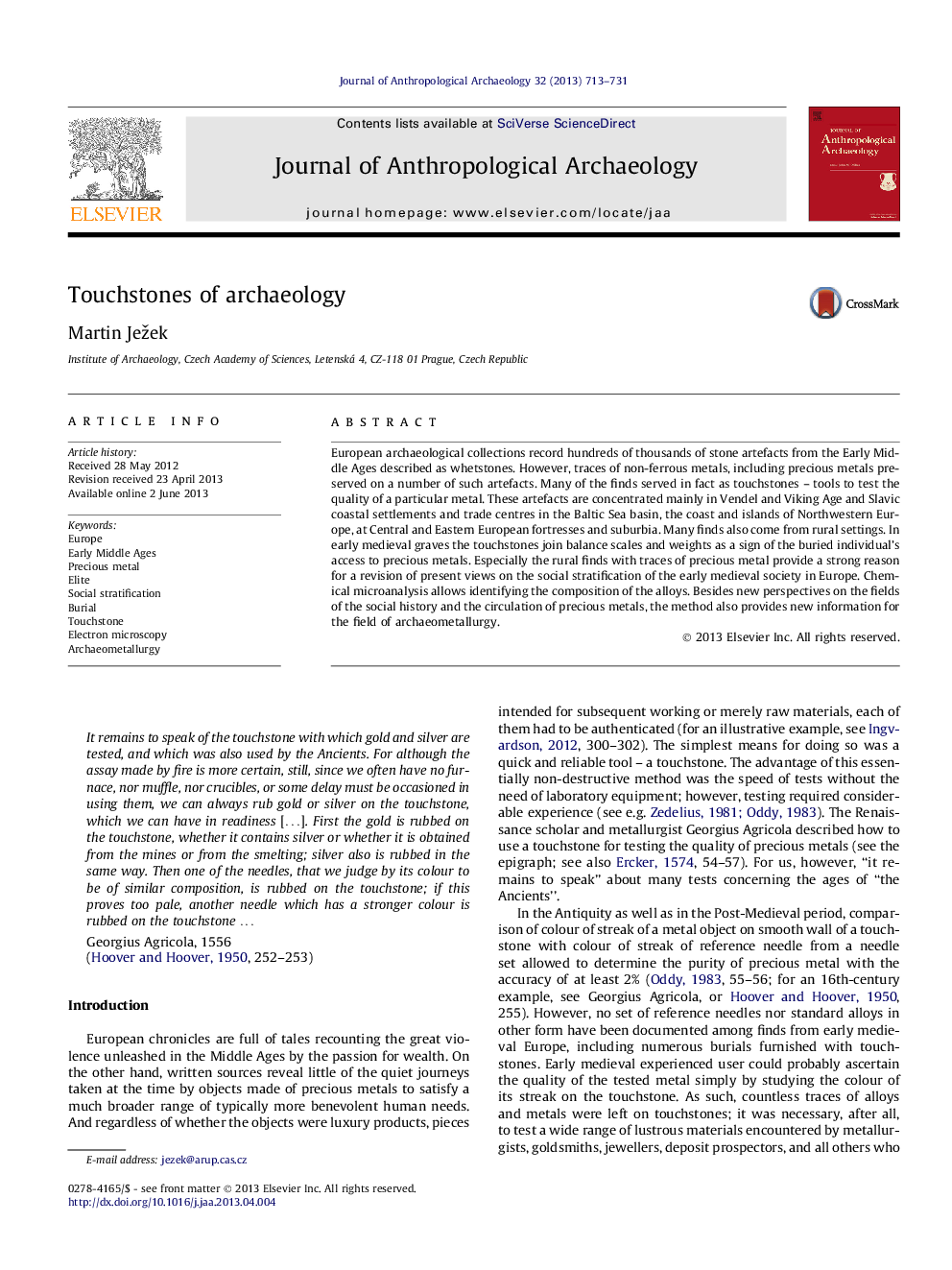| Article ID | Journal | Published Year | Pages | File Type |
|---|---|---|---|---|
| 10498722 | Journal of Anthropological Archaeology | 2013 | 19 Pages |
Abstract
European archaeological collections record hundreds of thousands of stone artefacts from the Early Middle Ages described as whetstones. However, traces of non-ferrous metals, including precious metals preserved on a number of such artefacts. Many of the finds served in fact as touchstones - tools to test the quality of a particular metal. These artefacts are concentrated mainly in Vendel and Viking Age and Slavic coastal settlements and trade centres in the Baltic Sea basin, the coast and islands of Northwestern Europe, at Central and Eastern European fortresses and suburbia. Many finds also come from rural settings. In early medieval graves the touchstones join balance scales and weights as a sign of the buried individual's access to precious metals. Especially the rural finds with traces of precious metal provide a strong reason for a revision of present views on the social stratification of the early medieval society in Europe. Chemical microanalysis allows identifying the composition of the alloys. Besides new perspectives on the fields of the social history and the circulation of precious metals, the method also provides new information for the field of archaeometallurgy.
Keywords
Related Topics
Social Sciences and Humanities
Arts and Humanities
History
Authors
Martin Ježek,
